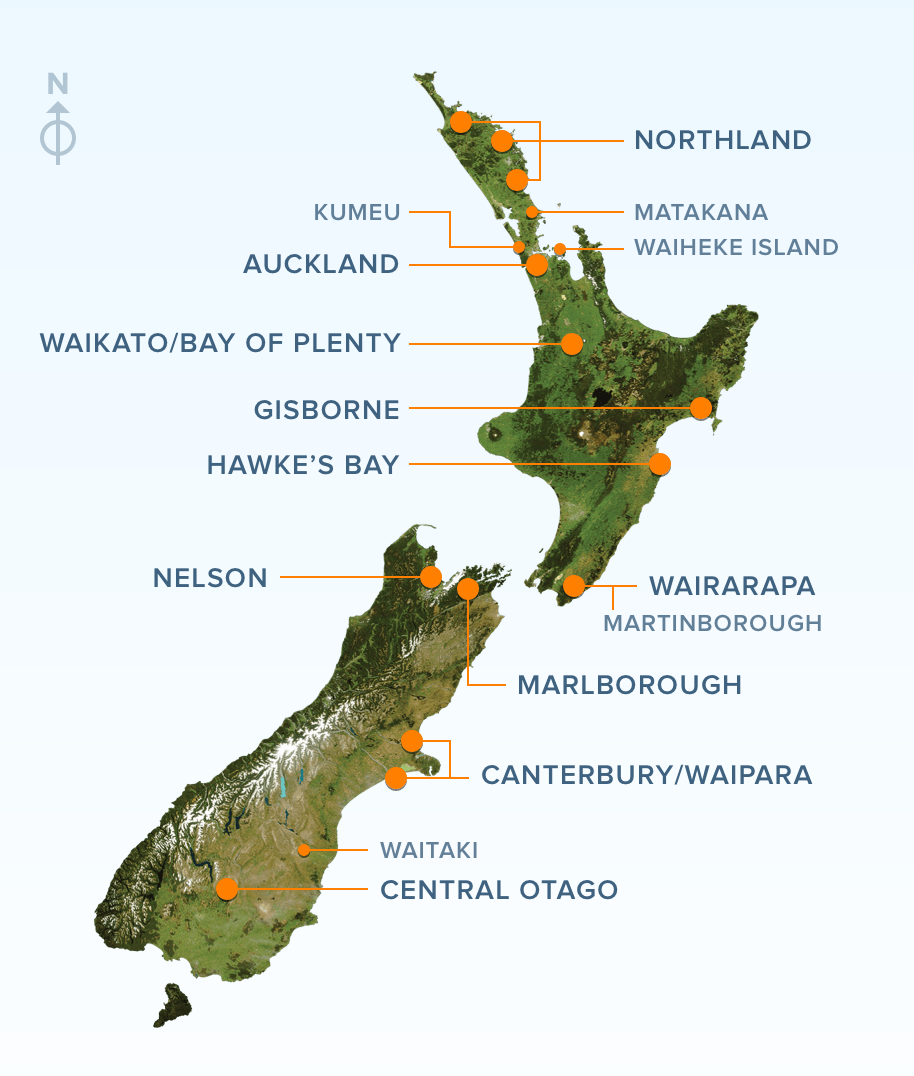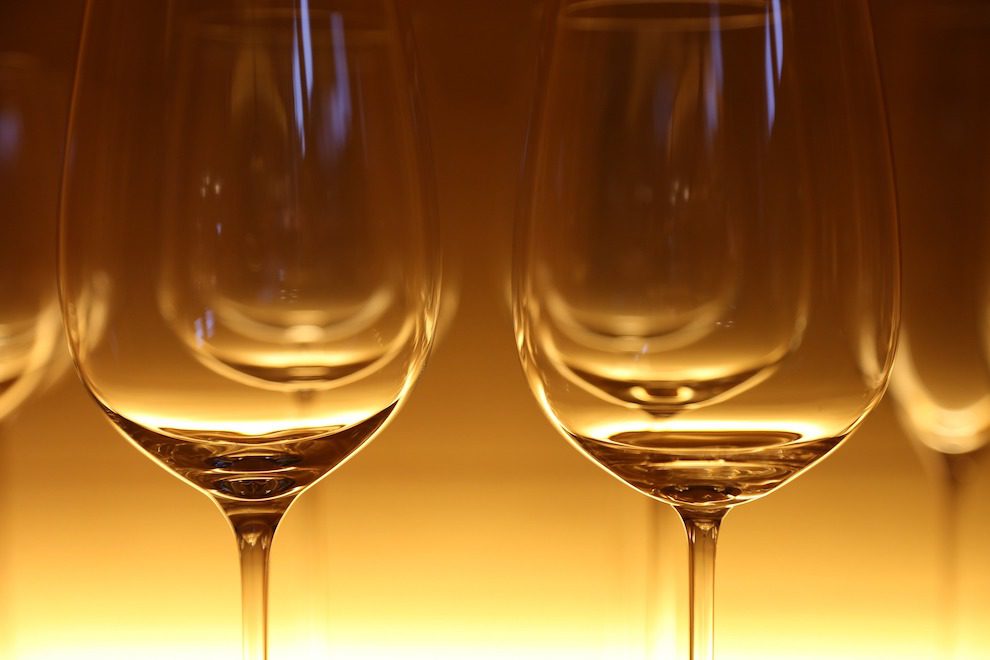In our last column, we looked into the Australian wine scene; this time, let us visit its next-door neighbour, New Zealand.
At first glance, it may be difficult to understand why this remote country, with a population of only 5 million people, is home to some of the best wines on the planet. New Zealand produces only 1 percent of the world’s wine but was ranked in 2019 as the seventh-largest wine exporter by value internationally, at approximately US$1.2 billion. This is because the country is highly focused on producing quality wines that can be traded at a premium price. Any doubts regarding the quality of New Zealand wines can be banished immediately with a sip of the country’s distinctive Sauvignon Blanc white wines: this type of wine is simply in a category of its own, owing to its pungent bouquet, often loaded with pure and precise notes of tropical fruits and fresh grass.
It is true that New Zealand is a relative newcomer among key wine-producing countries. Despite records showing the first wines were produced in New Zealand in the 1840s, it was only in the 1980s that New Zealand wines began to be known and recognised internationally, thanks to the unique style of its Sauvignon Blanc.
Some wine-producing regions in New Zealand have a similar climate to that of famed wine regions in Australia. For example, the Auckland wine region shares a similar latitude with the Yarra Valley wine region in Victoria, Australia. Therefore, grape varieties commonly found in Australia – such as Shiraz and Chardonnay – can also be found in New Zealand.
As most vineyards in New Zealand are near the coast, the character of the grapes is influenced by the temperate maritime climate. The effects of long periods of sunshine exposure in the daytime – promoting grape ripeness – are moderated by cooling sea breezes at night, which help grapes retain their acidity and aroma. This type of climate is conducive to quality grapes, essential for winemakers to produce great wines.
 The country consists of two land masses: the North Island and the South Island. In the north, key wine regions to watch include Hawke’s Bay (for its full-body, lush-style Chardonnay) and Wairarapa (a fine producer of Burgundy-inspired Pinot Noir). However, the most renowned regions are all on the South Island, where the climate can be significantly cooler than up north and appropriate for grape varieties that require a chillier growing environment.
The country consists of two land masses: the North Island and the South Island. In the north, key wine regions to watch include Hawke’s Bay (for its full-body, lush-style Chardonnay) and Wairarapa (a fine producer of Burgundy-inspired Pinot Noir). However, the most renowned regions are all on the South Island, where the climate can be significantly cooler than up north and appropriate for grape varieties that require a chillier growing environment.
At the northern tip of the South Island is New Zealand’s flagship wine region, Marlborough. The quality of its Sauvignon Blanc wines shocked the planet in the 1980s and placed the country on the world stage of winemaking.
The Sauvignon Blanc grape variety originated in France and is commonly used in the white wines of Bordeaux. It can be made in a crisp, refreshing mineral-driven style; or blended with Semillon, to create the famous Sauternes dessert wine. In the Loire Valley, it is often made into a less aromatic but fresher style with more citrus and green apple flavours on the palate.
Thanks to the region’s sunny and dry yet cool climate, together with the free-draining and moderately fertile soil, the Sauvignon Blanc wines from Marlborough have evolved in a different direction from their French counterparts. They are distinctively aromatic, filled with a bouquet of tropical fruits – think passion fruit – complemented by herbaceous notes such as asparagus or freshly-cut grass. Sauvignon Blanc wines from the Marlborough region greet drinkers with open arms compared to their discreet cousins from France. This perhaps explains the universal popularity of these New World wines. Marlborough Sauvignon Blanc wines can be served as an aperitif on their own, and delightfully complement fresh seafood or a garden salad with vinaigrette dressing.
Although Sauvignon Blanc might have taken the limelight, my personal favourites among New Zealand wines are the Pinot Noir reds from the Central Otago wine region – the world’s most southerly vineyards. Distinct from maritime climate regions in New Zealand, Central Otago’s continental climate – hot summers, long and dry autumns and cold winters – is optimal for Pinot Noir to flourish. The latter is a grape variety that is challenging to cultivate, but often rewarding in terms of wine quality if the vineyards are handled right.
The extreme weather in Central Otago gives the Pinot Noir wine a silky texture, coupled with high intensity and fragrant, bright notes of strawberry, raspberry, ripe cherries and often a touch of spices and fresh herbs, supported by a taut structure. This is often my go-to-choice when serving Peking duck or Cantonese-style fried pigeon.
New Zealand wines can be summed up as having a sharp focus on quality over quantity. These wines are often elegantly powerful and are able to showcase the purity of the varietals. Except for a few high-end labels, New Zealand wines are budget-friendly, ranging from about MOP100 per bottle for entry-level offerings from a reputable winery, to around MOP300 for a mid-range but already superior selection.
New Zealand should definitely be on the radar of all wine lovers on a budget that are searching for affordable yet remarkable weekday wines.
This month’s recommendation:

- Name of wine: Catalina Sounds Sauvignon Blanc 2018
- Region/country of origin: Marlborough, New Zealand
- Grape variety: Sauvignon Blanc
- Price: MOP136
- Available at: Bevtech Ltd. (https://bevtechshop.com)
- Official product details: https://www.catalinasounds.co.nz/#/cssauvblanc
- Tasting notes: A very attractive bouquet reminiscent of guava appears up front, immediately followed by ripe grapefruit and a whiff of fresh grass. On the palate, the wine explodes with flavours of tropical fruits. The wine has a well-textured body and a long, pleasant citrusy and mineral finish.
- The verdict: A hot summer evening calls for a well-chilled bottle of pungently aromatic Sauvignon Blanc, to refresh the palate and to entice the appetite. While there are some established labels from New Zealand that are almost synonymous with Sauvignon Blanc (think Cloudy Bay, Villa Maria, etc.), it is worthwhile to get to know some relatively new players in the market, that offer the same or even better quality, for less money. The Catalina Sounds winery released its first vintage in 2005 and has since been known for its commitment to producing premium quality wines, and for its winemaking philosophy of minimum intervention. It sources all grapes from the famous Marlborough region – just like those previously-mentioned big labels. This fruit-focused wine can be refreshing on its own but is also an ideal match with fresh oysters, thanks to its high acidity and minerality. It additionally works well with a light entrée such as grilled seafood salad with fresh herbs in lemon juice and olive oil dressing.
By Mr. Oscar Man Cheng Ho
IFTM Lecturer in Wine Studies
WSET (Level 3) Qualification
Mr. Ho has since an early age been immersed in – and fascinated by – the world of wines. As a child, he was frequently to be found at his family’s restaurant, one of the city’s oldest establishments serving Portuguese fare and, of course, wine. It was only natural that his first job was in the wine trade. Mr. Ho joined IFTM as a lecturer in 2005 and has latterly taught wine-related courses. He also provides training and support to the student-led IFTM Wine Appreciation Club.









